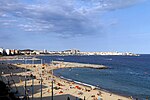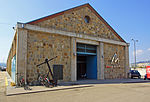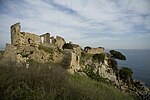Estadi Palamós Costa Brava
CF Badalona FuturFootball venues in CataloniaPalamós CFSports venues completed in 1989

The Estadi Municipal Palamós Costa Brava is a multi-use stadium located in Palamós, Catalonia, Spain. It is currently used for football matches and is the home stadium of Palamós CF.
Excerpt from the Wikipedia article Estadi Palamós Costa Brava (License: CC BY-SA 3.0, Authors, Images).Estadi Palamós Costa Brava
Carrer d'Aragó,
Geographical coordinates (GPS) Address Nearby Places Show on map
Geographical coordinates (GPS)
| Latitude | Longitude |
|---|---|
| N 41.853611111111 ° | E 3.1213888888889 ° |
Address
Palamós CF
Carrer d'Aragó
17230
Catalonia, Spain
Open on Google Maps









